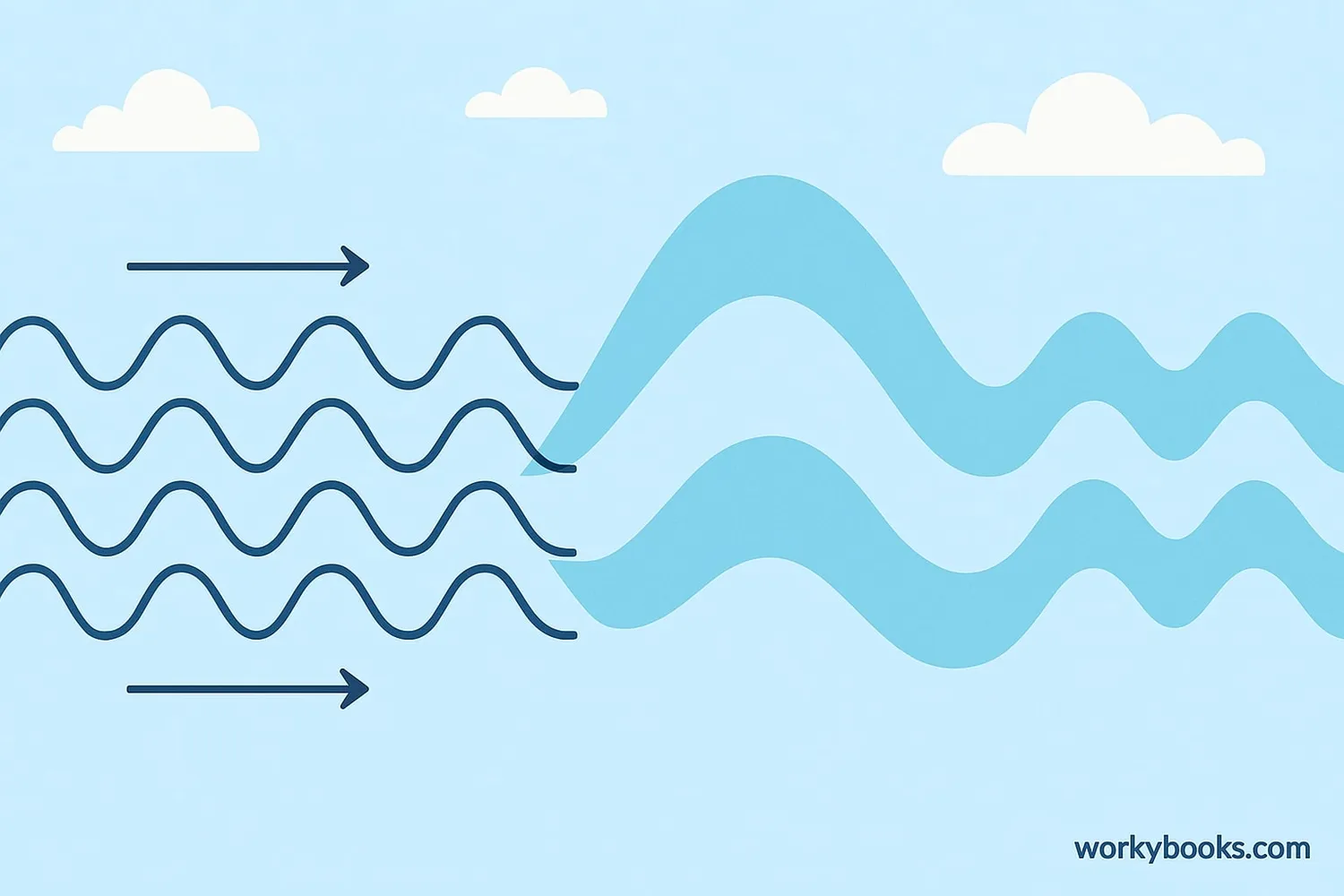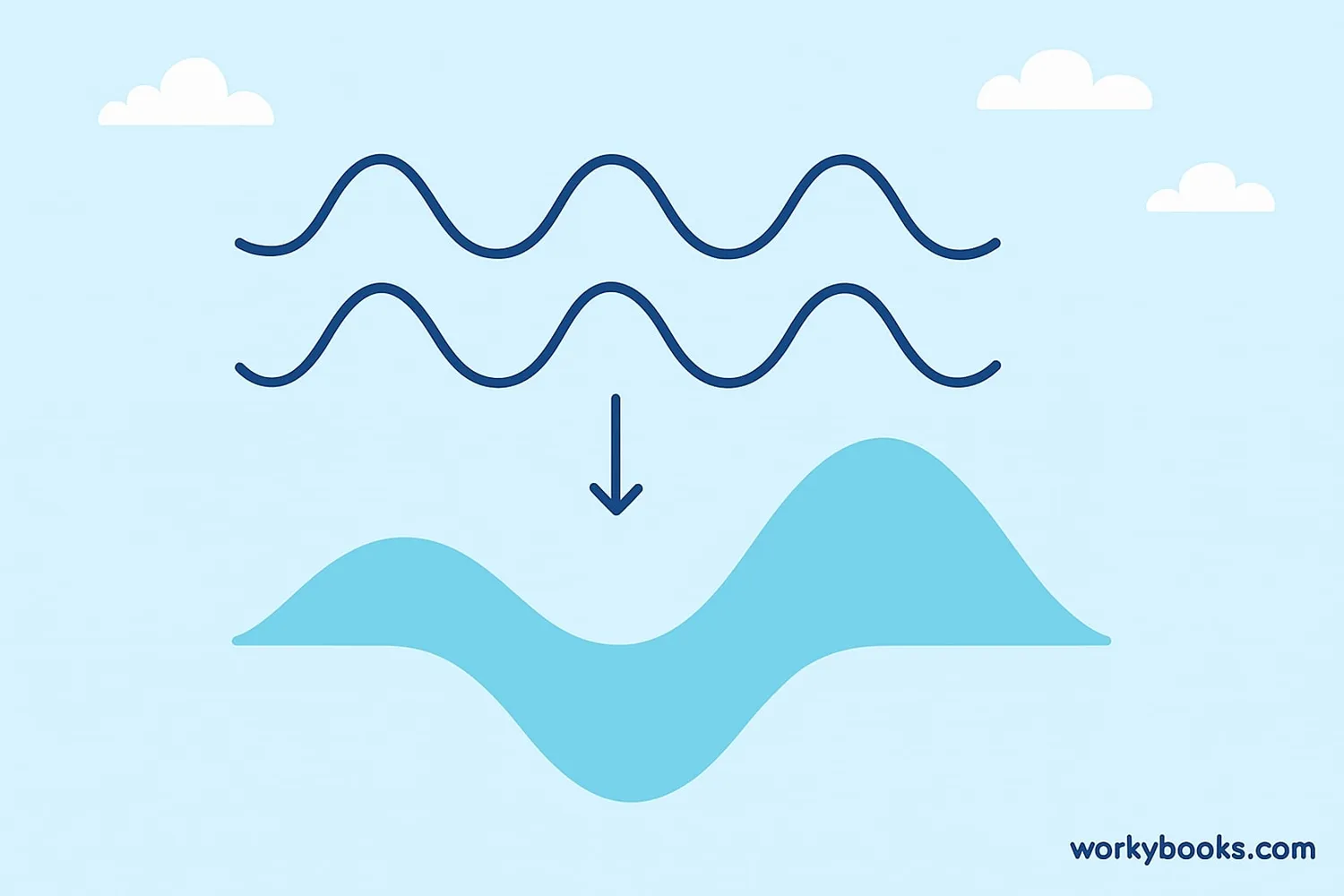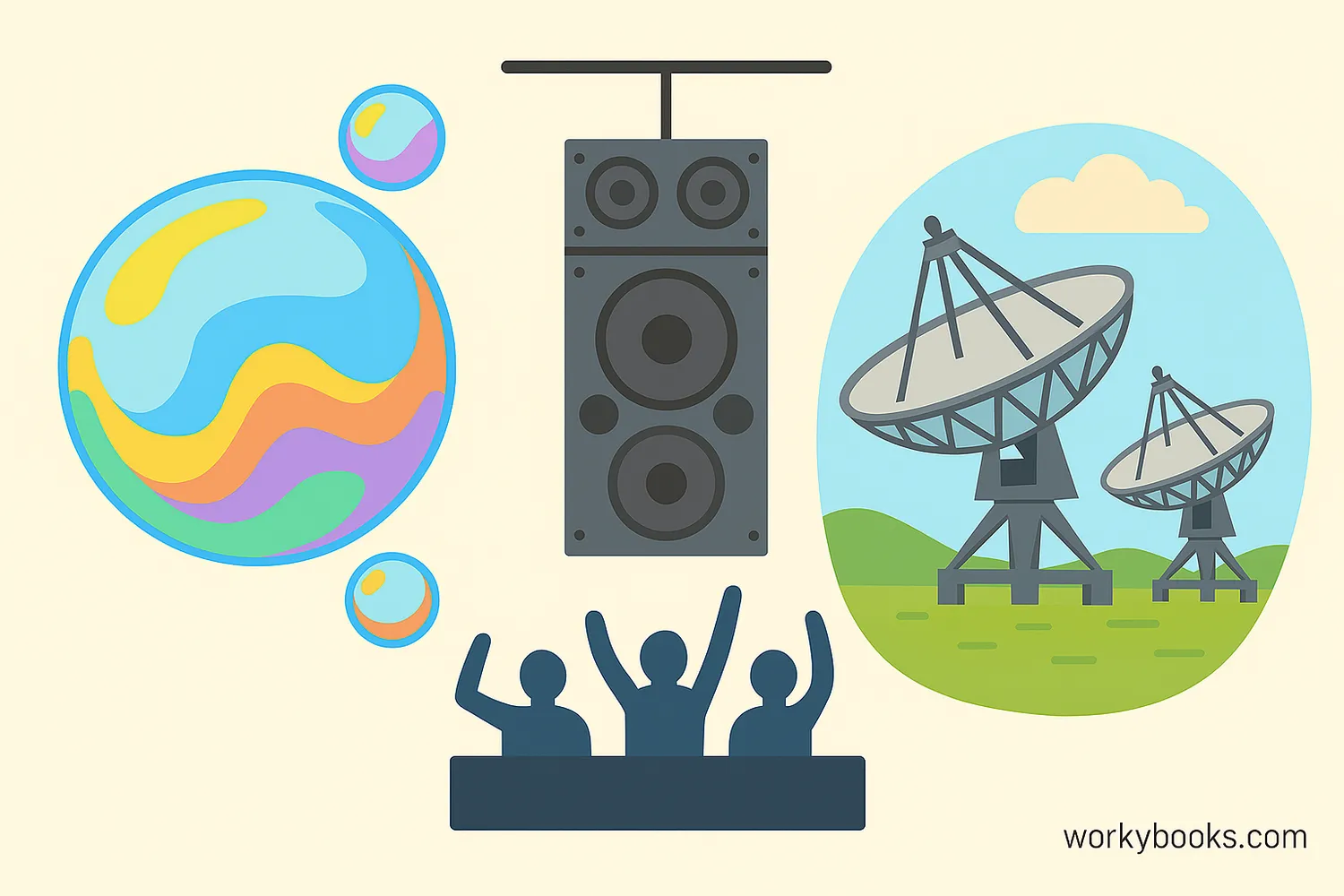Constructive Interference - Definition, Examples, Quiz, FAQ, Trivia
Discover how waves combine to create bigger patterns!
What is Constructive Interference?

Constructive interference happens when two waves meet and combine to make a bigger wave! It's like when friends work together to push a swing higher. When the peaks (highest points) of two waves line up, they add together to create a wave with higher amplitude.
Definition: Constructive interference occurs when waves combine so that the resulting wave has a larger amplitude than the individual waves.
This happens because of the superposition principle - the idea that when waves overlap, the total displacement is just the sum of the displacements of the individual waves.
Wave Fact!
Constructive interference can happen with all types of waves - water waves, sound waves, and even light waves!
How Constructive Interference Works

For constructive interference to occur, waves need to be "in phase" - meaning their peaks and valleys line up perfectly. Here's what happens:
Waves Approach
Two waves with similar wavelengths move toward each other
Crests Align
The highest points (crests) of both waves meet at the same place
Addition Occurs
The waves add together to create a larger wave
Resultant Wave
A new wave forms with higher amplitude
Phase difference is key: When waves are perfectly in phase (0° difference), constructive interference is maximum. The path difference (how much farther one wave travels) must be a whole number of wavelengths for this to happen.
In Young's double-slit experiment, light passes through two slits and creates patterns of bright spots where constructive interference occurs.
Interference Pattern!
When light waves interfere constructively, they create bright bands of light. When they interfere destructively, they create dark bands.
Real-World Examples

Constructive interference isn't just a science concept - you can see and hear it all around us! Here are some real-world examples:
Soap Bubbles
Colors appear when light waves reflect and interfere constructively
Sound Systems
Speakers arranged to amplify sound through constructive interference
Radio Telescopes
Combine signals from multiple dishes using interferometry
Other important examples:
• Thin film interference: Creates colors in oil slicks and butterfly wings
• Newton's rings: Circular interference patterns in optics
• Noise-canceling headphones: Use destructive interference to reduce sound
• Michelson-Morley experiment: Used interference to study light's properties
Wave Interference Quiz
Test your knowledge of constructive interference with this 5-question quiz!
Frequently Asked Questions
Here are answers to common questions about constructive interference:
Wave Trivia
Discover fascinating facts about wave interference:
Historical Discovery
Thomas Young demonstrated wave interference of light in 1801 with his double-slit experiment, proving that light behaves as a wave.
Nature's Interference
Butterfly wings get their brilliant colors not from pigments, but from microscopic structures that cause constructive interference of light waves.
Astronomy Application
The Very Large Array telescope in New Mexico uses constructive interference from 27 radio dishes to create images as sharp as a single dish 22 miles wide!
Quantum Connection
Constructive interference plays a crucial role in quantum mechanics, where matter particles like electrons also exhibit wave-like interference patterns.


